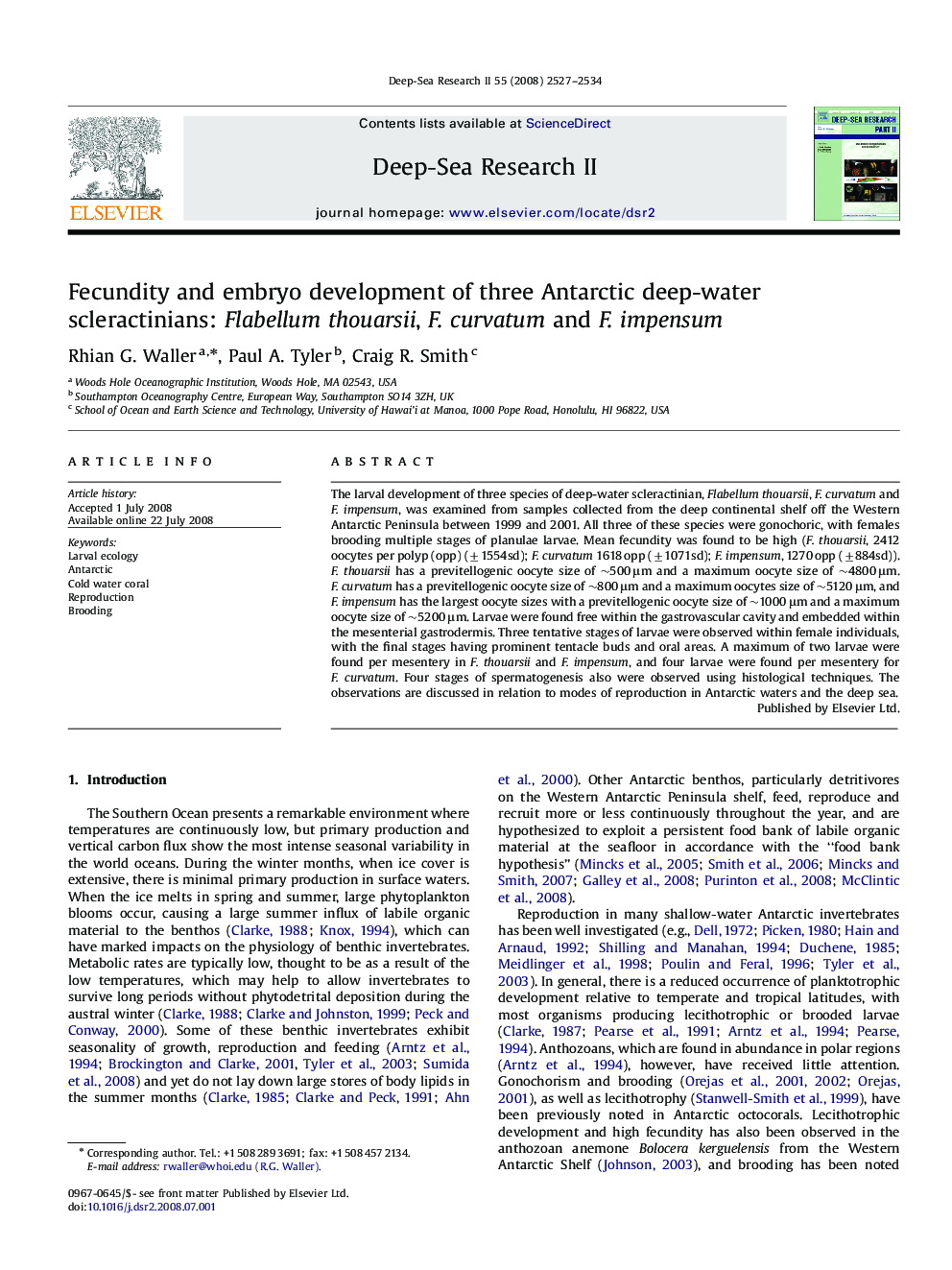| Article ID | Journal | Published Year | Pages | File Type |
|---|---|---|---|---|
| 4537916 | Deep Sea Research Part II: Topical Studies in Oceanography | 2008 | 8 Pages |
The larval development of three species of deep-water scleractinian, Flabellum thouarsii, F. curvatum and F. impensum, was examined from samples collected from the deep continental shelf off the Western Antarctic Peninsula between 1999 and 2001. All three of these species were gonochoric, with females brooding multiple stages of planulae larvae. Mean fecundity was found to be high (F. thouarsii, 2412 oocytes per polyp (opp) (±1554sd); F. curvatum 1618 opp (±1071sd); F. impensum, 1270 opp (±884sd)). F. thouarsii has a previtellogenic oocyte size of ∼500 μm and a maximum oocyte size of ∼4800 μm. F. curvatum has a previtellogenic oocyte size of ∼800 μm and a maximum oocytes size of ∼5120 μm, and F. impensum has the largest oocyte sizes with a previtellogenic oocyte size of ∼1000 μm and a maximum oocyte size of ∼5200 μm. Larvae were found free within the gastrovascular cavity and embedded within the mesenterial gastrodermis. Three tentative stages of larvae were observed within female individuals, with the final stages having prominent tentacle buds and oral areas. A maximum of two larvae were found per mesentery in F. thouarsii and F. impensum, and four larvae were found per mesentery for F. curvatum. Four stages of spermatogenesis also were observed using histological techniques. The observations are discussed in relation to modes of reproduction in Antarctic waters and the deep sea.
